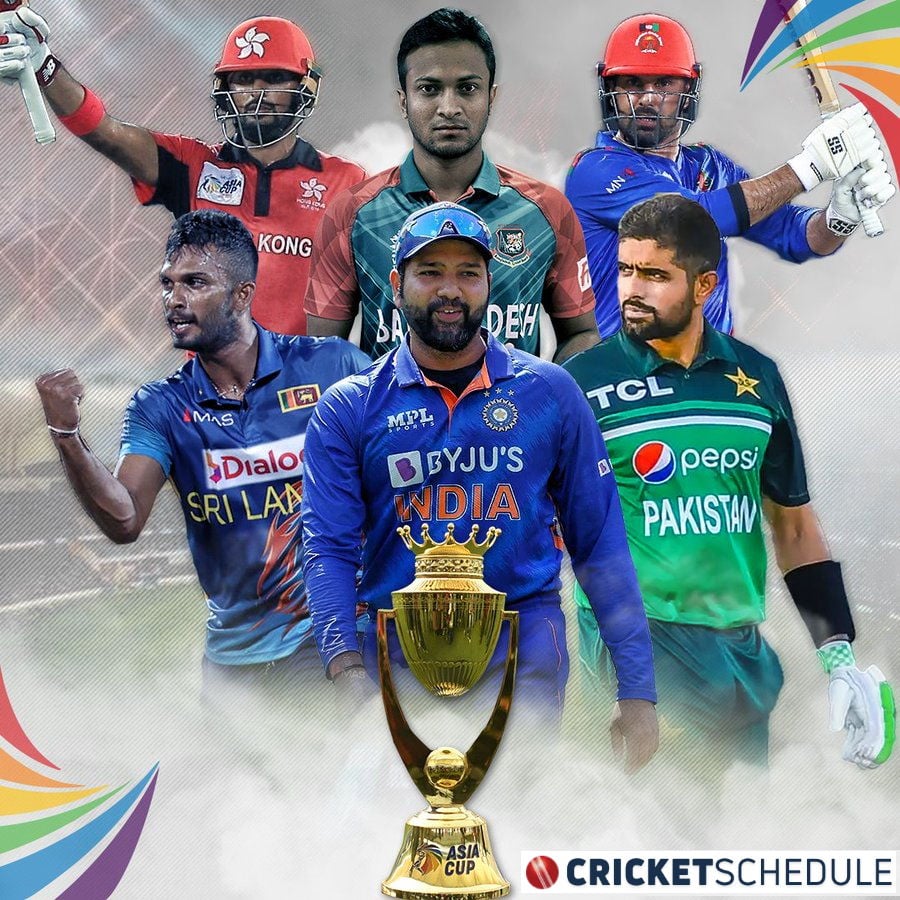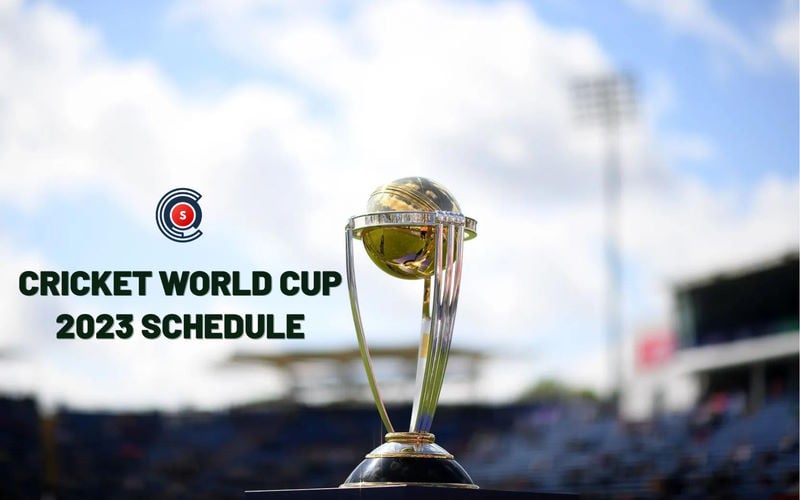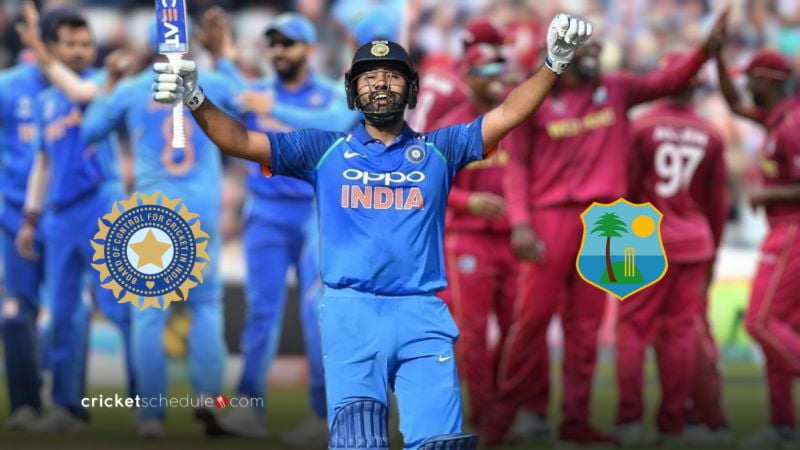
Cricket is a fascinating sport with a rich history and culture. Regardless of whether you are a player, a fan, or a newcomer to the game, it is crucial to grasp the rules and various formats of cricket in order to completely understand and relish the sport. By abiding by the regulations and guidelines established by the International Cricket Council (ICC), cricket can prosper and grow as a universal sport.
Cricket is a bat-and-ball game that is played between two teams of 11 players each as per cricket schedule announced by the concern league or cricket board. The game is played on a circular or oval-shaped field, with a rectangular 22-yard-long pitch in the center. The pitch is divided into two halves by a line called the crease, and each team takes turns to bat and bowl.
Also Watch Full Cricket Documentary By Network:
What is Cricket? Cricket Explained – Watch Full Netflix Documentary Online
The objective of the game is to score as many runs as possible while fielding to prevent the other team from scoring runs. The team that scores the most runs at the end of the game wins.
Each team has one innings, which consists of batting and bowling. During the batting innings, the batsmen try to score runs by hitting the ball with their bat and running between the wickets. The team’s score is the total number of runs scored by the batsmen before they are all out or the innings ends.
During the bowling innings, the bowlers try to dismiss the batsmen by bowling the ball in such a way that it hits the wickets or is caught by a fielder. If a batsman is dismissed, they are replaced by the next batsman in the batting order.
The game has a number of different formats, including Test cricket, One Day International (ODI) cricket, and Twenty20 (T20) cricket. Each format has its own set of rules and regulations, and matches can last anywhere from a few hours to several days.
Cricket also has a complex set of rules and regulations that govern various aspects of the game, such as the number of players on the field, the equipment used, and the methods of scoring and dismissal. Some of the key rules and regulations include:
- The use of a ball and bat made of specific materials and dimensions
- The requirement for the bowler to bowl with a straight arm and not to overstep the crease
- The different ways in which a batsman can be dismissed, such as being bowled, caught, or run out
- The role of the umpires in enforcing the rules and making decisions
- The use of technology such as video replays and the Decision Review System (DRS) to assist with decision-making
Knowing the rules of any game is essential to enjoying and appreciating the sport. Cricket is no exception. Without a basic understanding of cricket rules, one can easily get confused and miss the excitement and drama of the game.
The importance of knowing the rules of cricket extends beyond just understanding the game. It also enhances your appreciation for the strategies involved and the athletic skill required by the players. Additionally, knowledge of the rules will help you follow the game and enjoy it more fully, whether you’re watching it on TV or attending a match in person.
Furthermore, knowing the rules of cricket can also help prevent disputes or controversies that may arise during a game. If you’re familiar with the rules, you’ll be able to understand and interpret any umpiring decisions that may be made, and you’ll be able to appreciate the challenges that umpires face in making these decisions.
Moreover, understanding the rules can also help players to improve their game. By knowing the rules, players can develop strategies that will help them perform better and avoid committing fouls or penalties.
50 Most Important Rules in Modern Cricket
Cricket is a popular sport played worldwide, and it has three main formats: T20, ODI, and Test cricket. Each format has its own unique rules and strategies, making it important for players and fans alike to understand the nuances of the game.
Knowing the rules of cricket is essential for players and officials, as it can determine the outcome of a game. Understanding the rules of cricket can also enhance the overall experience of watching and following the sport, making it more enjoyable and engaging.

Here are top 50+ most important rules every cricket lover and cricketers must know
| # | Rule | Description |
|---|---|---|
| 1 | Number of players | A cricket team can have 11 players on the field at any given time. |
| 2 | Overs | An over consists of six legal deliveries, after which the bowler switches ends and another bowler takes over. |
| 3 | Scoring | Runs can be scored in a variety of ways, including hitting the ball with the bat, running between the wickets, or via penalties. |
| 4 | Wickets | The aim of the fielding team is to get the batting team out by hitting the wickets with the ball, catching the ball, or by other means. |
| 5 | No-balls | A delivery that is deemed to be illegal can be called a no-ball, which results in the batting team receiving an extra run and an additional delivery. |
| 6 | Wide balls | A delivery that is outside the batsman’s reach is called a wide, which results in the batting team receiving an extra run. |
| 7 | Fielding restrictions | There are specific rules about the number of fielders that can be placed in certain areas of the field, particularly during limited-overs matches. |
| 8 | LBW | If the ball hits the batsman’s leg in front of the wicket and the umpire thinks the ball would have gone on to hit the wicket, then the batsman is given out LBW. |
| 9 | Run-out | If a batsman is outside the crease and the fielder hits the stumps with the ball before the batsman has made it back to the crease, the batsman is given out run-out. |
| 10 | Caught | If a fielder catches the ball before it hits the ground after being hit by the batsman, the batsman is given out caught. |
| 11 | Time-wasting | Players are not allowed to waste time intentionally, and if they do, the umpire can penalize them by adding runs to the other team’s score. |
| 12 | DRS | In some matches, teams can challenge umpires’ decisions by requesting a review using the DRS technology. However, teams are only allowed a limited number of reviews. |
| 13 | Powerplay | In limited-overs cricket, a certain number of overs are designated as powerplay overs where fielding restrictions are more stringent. |
| 14 | Toss | Before a match, the two captains meet with the match referee to toss a coin. The winner of the toss decides whether to bat or bowl first. |
| 15 | Follow-on | If the team batting first scores significantly more runs than the team batting second, the team batting second may be required to follow-on, meaning they must bat again. |
| 16 | Fielding | The fielding team must remain inside the fielding boundaries while the ball is in play. Fielders are not allowed to touch the ball with their hat or any other object. |
| 17 | Bouncers | A bowler is allowed to bowl a bouncer, which is a delivery that bounces high over the batsman’s head. However, there are restrictions on the number of bouncers a bowler. |
| 18 | Dead ball | If the ball becomes damaged or unusable during the match, the umpire may declare a dead ball, which means that play is temporarily |
| 19 | Injuries | If a player is injured during the match and is unable to continue playing, a substitute fielder may be allowed to take their place. However, there are restrictions on who can act as a substitute, and they are not allowed to bat or bowl. |
| 20 | Misconduct | Players must follow a code of conduct, and if they behave in an inappropriate manner, they may be penalized. Examples of misconduct include using abusive language, deliberately distracting the batsman, or damaging the pitch. |
| 21 | Playing conditions | The rules of cricket may be modified depending on the playing conditions. For example, in matches played in wet weather, a different type of ball may be used, or the number of overs may be reduced. |
| 22 | Umpires | There are two umpires on the field during a match, one standing at the bowler’s end and the other standing at the opposite end. They are responsible for making decisions on the field, including whether a batsman is out or not, and for ensuring that the match is played according to the rules. |
| 23 | Stumping | If the wicket-keeper catches the ball and then removes the bails before the batsman has made it back to the crease, the batsman is given out stumped. |
| 24 | Obstructing field | If a batsman deliberately obstructs a fielder from making a catch or fielding the ball, they may be given out obstructing the field. |
| 25 | Overthrow | If the ball hits a fielder’s body or equipment and goes beyond the fielding boundary, the batting team may be awarded extra runs in the form of overthrows. |
| 26 | Pitch conditions | The pitch must be of a certain size and shape, and it must be maintained to a certain standard. The pitch must also be free from any debris or other hazards that could cause injury to the players. |
| 27 | Player equipment | Players must wear appropriate equipment, including helmets, pads, gloves, and other protective gear. The equipment must meet certain standards, and it must be worn correctly at all times. |
| 28 | Follow-on threshold | In test matches, the follow-on threshold is when the first team to bat scores at least 200 runs more than the second team’s score. If this happens, the captain of the first team may choose to enforce the follow-on and make the second team bat again. |
| 29 | No-ball | A no-ball is called by the umpire if the bowler oversteps the crease while bowling, or if the ball bounces more than once before reaching the batsman. A no-ball can also be called for other infractions, such as throwing the ball or damaging the pitch. |
| 30 | Wide ball | A wide ball is called by the umpire if the bowler bowls a delivery that is outside the batsman’s reach. The batting team is awarded an extra run for each wide ball, and the bowler must bowl an additional delivery. |
| 31 | Free hit | If the bowler bowls a no-ball, the next delivery is called a free hit, which means that the batsman cannot be out unless they are run out. |
| 32 | Ball-tampering | Players are not allowed to change the condition of the ball in any way, such as by rubbing it on the ground or applying saliva to it. If a player is caught tampering with the ball, they may be penalized. |
| 33 | DRS (Decision Review System) | DRS is a technology used to assist umpires in making decisions during a match. Each team is given a certain number of review requests, which they can use to challenge umpire decisions. |
| 34 | Fielding restrictions | In limited-overs cricket, there are restrictions on the placement of fielders in the first few overs of the innings, to encourage aggressive batting and scoring. |
| 35 | Leg byes | If the ball hits the batsman’s body or equipment and then goes on to hit a part of the field that is not protected by a fielder, the batting team may be awarded extra runs in the form of leg byes. |
| 36 | Over rate | Each team is given a certain amount of time to complete their overs, and if they fail to do so, they may be penalized by having runs added to the other team’s score. |
| 37 | Powerplay | In limited-overs cricket, a powerplay is a period of the innings when the fielding restrictions are more stringent, in order to encourage more aggressive batting and scoring. |
| 38 | Retired hurt | If a batsman is injured during the match, they may be allowed to retire hurt and be replaced by another batsman. If the injured batsman recovers, they may be allowed to resume their innings at a later point. |
| 39 | Run rate | In limited-overs cricket, each team’s run rate is calculated based on the number of runs they have scored and the number of overs they have faced. A team’s run rate is an important factor in determining their strategy during the match. |
| 40 | Super over | In some matches, if the scores are tied at the end of the match, a super over is played, where each team faces one over of six deliveries, and the team with the highest score wins. |
| 41 | Timed out | If a new batsman takes too long to come onto the field after a wicket has fallen, they may be given out timed out. |
| 42 | Retired hurt | If a batsman is injured during the match, they may be allowed to retire hurt and be replaced by another batsman. If the injured batsman recovers, they may be allowed to resume their innings at a later point. |
| 43 | Obstructing the field | If a batsman intentionally obstructs a fielder from making a run-out or stumping, they may be given out obstructing the field. |
| 44 | Fair delivery | The ball must be bowled with a straight arm, and the bowler’s front foot must not land beyond the popping crease at the point of delivery. |
| 45 | Timed matches | In some forms of cricket, such as first-class cricket, matches are played over a set number of days, and each team has a set number of innings to bat and bowl. |
| 46 | Injured fielder | If a fielder is injured during the match and unable to continue, a substitute fielder may be brought on in their place. |
| 47 | Wide guidelines | The umpires have a set of guidelines to follow when determining whether a delivery is wide or not. If the delivery is outside these guidelines, it will be called a wide. |
| 48 | Bouncer | A bouncer is a delivery that bounces higher than shoulder height of the batsman. The number of bouncers a bowler can deliver per over is limited in limited-overs cricket. |
| 49 | Run out | A batsman can be run out if a fielder breaks the wicket with the ball while the batsman is out of their crease. |
| 50 | Hit wicket | A batsman is out hit wicket if they break their own wicket with their bat or body while playing a shot. |
| 51 | Follow-on | If a team is batting second and falls significantly behind the first team’s score, the first team may have the option to enforce the follow-on, where the second team must bat again immediately. |
Knowing the rules of cricket is essential for anyone who wants to fully enjoy and appreciate the sport. It enhances your understanding of the game, helps prevent disputes or controversies, and even helps players to improve their performance. So, whether you’re a casual fan or an aspiring cricketer, make sure you take the time to familiarize yourself with the rules of cricket.
International Cricket Council (ICC) – Governing body for the sport of cricket

The International Cricket Council (ICC) is the governing body for the sport of cricket worldwide. It was founded in 1909 as the Imperial Cricket Conference, and currently has 12 full members and 104 associate members.
The ICC is responsible for organizing and overseeing international cricket matches, tournaments, and events, including the Cricket World Cup, the World Twenty20, and the Champions Trophy. It also sets the rules and regulations of the game, including the laws of cricket, player eligibility, and anti-corruption measures.
The ICC has a number of committees and sub-committees that oversee different aspects of the game, including the Cricket Committee, which is responsible for proposing changes to the laws of cricket and improving the quality of the game. The ICC also has an Anti-Corruption Unit that monitors and investigates any suspicious activity related to match-fixing, spot-fixing, or other forms of corruption.
Three Cricket Formats explained

T20, ODI, and Test cricket are the three major formats of cricket. Each format has its own unique rules, playing conditions, and strategies. Here is a detailed explanation of how each format is different from the others:
T20 cricket:
T20 cricket is the shortest and the most popular format of cricket. It consists of 20 overs per side, with each over consisting of 6 balls. T20 cricket is known for its fast-paced and exciting nature, with batsmen trying to score as many runs as possible in the limited overs. The game is played in a maximum of 3 hours and is designed to appeal to younger audiences with shorter attention spans.
The format requires batsmen to play aggressively from the outset, as there is very little time to settle in. Bowlers must also be quick and accurate, as any loose deliveries can be punished by the batsmen. Fielding is an essential aspect of T20 cricket, with players diving and sliding to save runs and take catches.
ODI cricket:
ODI cricket is a more traditional format of cricket that consists of 50 overs per side. It is played over a day, with each team getting to bat and bowl for 50 overs. ODI cricket allows batsmen to take their time to settle in and build an innings, unlike T20 cricket, where they must score quickly from the outset.
This format requires a mix of aggression and patience from the batsmen, as they aim to set or chase a competitive total. The bowlers must also be accurate and economical, as they have to bowl 10 overs each. Fielding is crucial in ODI cricket, with players diving and sliding to save runs and take catches.
ODI cricket is a balance between the fast-paced action of T20 cricket and the strategic approach of Test cricket.
Test cricket:
Test cricket is the oldest and the most traditional format of cricket. It is played over five days, with each team getting to bat and bowl twice. Test cricket is known for its strategic nature, where batsmen take their time to build an innings, and bowlers aim to take wickets by bowling in good areas consistently.
Test cricket is the ultimate test of a cricketer’s skills and endurance, as it requires a high level of fitness, mental toughness, and technical ability.
The format also demands a high level of patience and concentration, as the game can be slow-paced and require long periods of focus.
Fielding is an essential aspect of Test cricket, with players often positioned in strategic locations to stop runs and take catches.
Cricket is a fascinating sport with a rich history and culture. Whether you are a player, fan, or newcomer to the sport, understanding the rules and format of cricket is essential for fully appreciating and enjoying the game. By following the rules and regulations set by the ICC, cricket can continue to thrive and evolve as a global sport.

Official Anthem
2023 Cricket World Cup Anthem Song

Asia Cup 2023
Asia Cup Schedule, Dates, Timing & Venues

Cricket Schedule
ICC Cricket World Cup Schedule 2023

LLC Masters 2023
LLC Schedule, Dates, Timing & Venues

Cricket Schedule
India vs West Indies Schedule 2023

Cricket Schedule
The Hundred Schedule 2023
